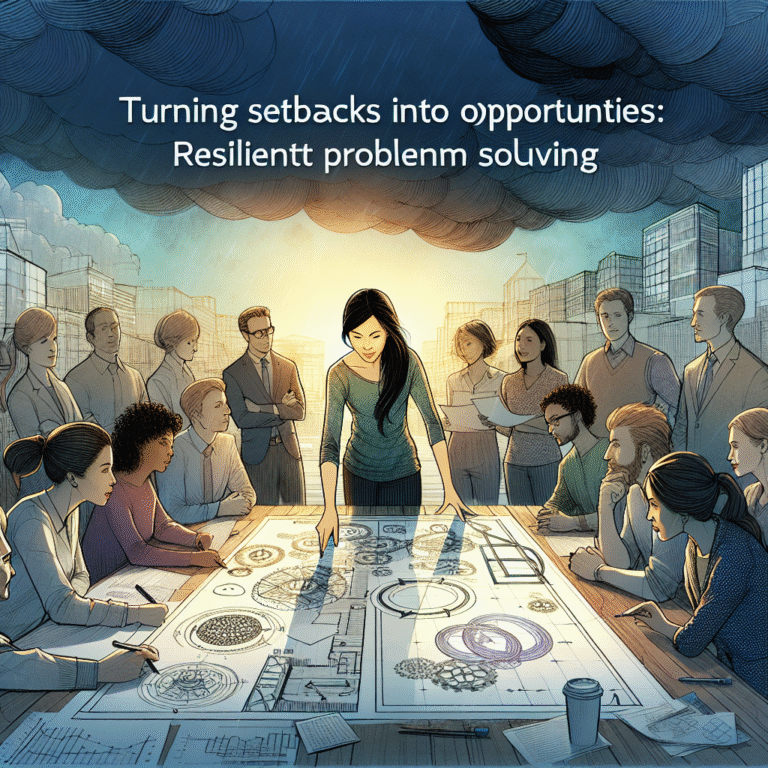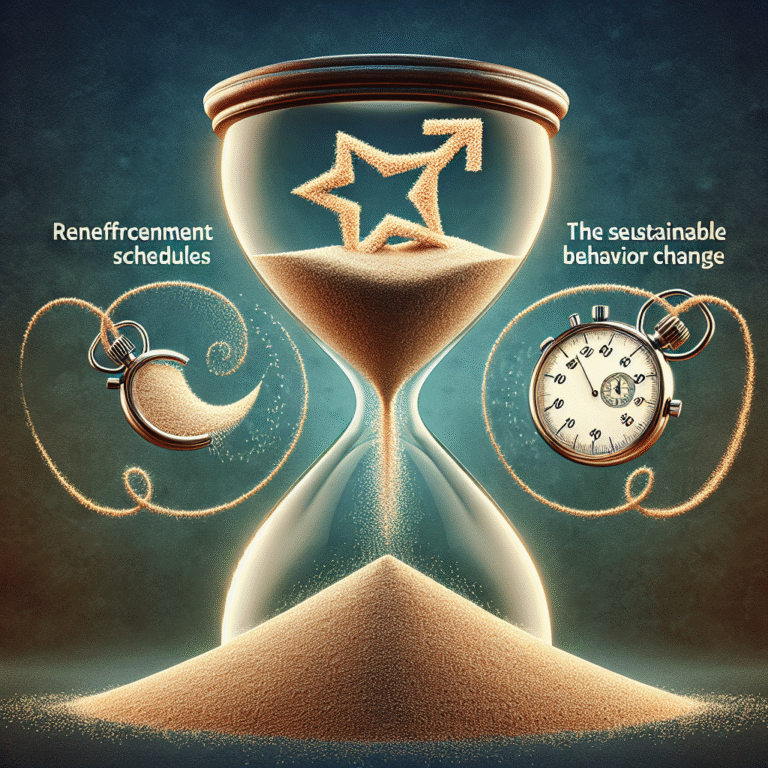
Introduction
Imagine standing in front of a mirror, convinced you see a reflection that’s spotlessly accurate. But unbeknownst to you, there’s a glaring smudge on the glass obscuring your view. This metaphor encapsulates the essence of Bias Blindness: Why We Struggle to See Our Own Cognitive Flaws. Just as that smudge distorts reality, our cognitive biases subtly alter our perceptions, leading us to overlook our own shortcomings and mistakes. Understanding this phenomenon is not merely an academic exercise; it’s essential for personal development, effective communication, and fostering healthy relationships.
In an increasingly complex world rife with information, recognizing our biases is more vital than ever. But how do we confront these hidden flaws? Let’s embark on this intriguing journey to discover the nuances of bias blindness and arm ourselves with the tools to mitigate its effects.
What is Bias Blindness?
At its core, bias blindness refers to the inability to recognize one’s own cognitive biases while being acutely aware of those present in others. This phenomenon isn’t just a quirk of human nature; it’s rooted in cognitive psychology, illuminating why our decision-making processes can become clouded. The very biases that color our judgments are often shielded from our own scrutiny.
The brain tends to prefer simplified explanations and familiar viewpoints, leading us to develop a false sense of objectivity. When we look at our choices, beliefs, and behaviors, we often believe we’ve arrived at them through rational thought. However, research shows that our decisions are frequently swayed by unseen gaps in our reasoning.
The Science Behind Bias Blindness
The Role of Cognitive Dissonance
Cognitive dissonance plays a pivotal role in bias blindness. When individuals are confronted with evidence that contradicts their beliefs or behaviors, it often leads to discomfort. To alleviate this discomfort, people might distort or ignore information, perpetuating their biases. This process can create a self-reinforcing cycle of ignorance.
Case Study: The Smoking Paradox
A well-known study surveyed smokers who acknowledged the health risks of smoking but continued to smoke nonetheless. Instead of changing their behavior, many rationalized their choice by focusing on anecdotal evidence or claiming the risks were exaggerated. This reflection on cognitive dissonance illustrates not only bias blindness but also people’s natural inclination to shield themselves from uncomfortable truths.
The Confirmation Bias Connection
Confirmation bias is another critical element contributing to bias blindness. We have a tendency to seek out information that confirms our pre-existing beliefs while ignoring or dismissing information that contradicts them. This behavior can lead us to develop echo chambers, where our views are reinforced but rarely challenged.
Table 1: Understanding the Relationship Between Bias Blindness and Confirmation Bias
| Concept | Definition | Impact on Decision-Making |
|---|---|---|
| Bias Blindness | Failure to see one’s own biases | Leads to poor self-awareness |
| Confirmation Bias | Favoring information that confirms pre-existing beliefs | Limits exposure to diverse viewpoints |
Why Do We Experience Bias Blindness?
Social Identity and Group Dynamics
Humans are inherently social beings, often identifying closely with groups. This allegiance can skew our perceptions, leading to bias blindness. When confronted with a conflict between group beliefs and personal judgments, most will lean towards the collective view to maintain harmony.
Case Study: Political Polarization
In recent election cycles, studies have shown that individuals often choose news sources that reinforce their political affiliations, disregarding factual inaccuracies that may challenge their viewpoints. This behavior exemplifies bias blindness as individuals insulate themselves within their political "bubbles."
Emotional Investment and Ego Protection
Another facet of bias blindness stems from emotional investment in our beliefs. When we perceive that our identity is tied to certain views or decisions, recognizing any flaws becomes a threat to our very sense of self. This emotional tug can prevent us from objectively assessing our cognitive biases.
Overcoming Bias Blindness
Cultivating Self-Awareness
One of the most profound ways to combat bias blindness is through self-awareness. By understanding our tendencies and actively questioning our assumptions, we can start to dismantle the biases that cloud our judgment. Mindfulness practices, such as meditation or journaling, can enhance self-awareness and promote clearer thinking.
Tip: Try adopting a "thought diary" where you catalog decisions and thoughts before and after receiving new information. Note how your perspective shifts, providing insight into your cognitive processes.
Seeking Diverse Perspectives
To combat bias blindness effectively, we must engage with differing viewpoints. Actively seeking out contrary opinions can help challenge entrenched biases and broaden our understanding. This practice fosters intellectual humility and illustrates that our view is not the only or necessarily the right one.
Case Study: Google’s Project Aristotle
An internal study at Google revealed that teams characterized by psychological safety—the freedom to disagree and discuss divergent viewpoints—outperformed others significantly. The embrace of diverse perspectives fostered innovation and resilience, counteracting bias blind spots.
Implementing Systematic Decision-Making Techniques
The Premortem Technique
One powerful method to counter bias blindness is the "premortem" technique, wherein you envision a future failure of a decision you’re about to make. By considering potential pitfalls, you can more effectively identify biases that might lead to failure, thereby improving decision quality.
Table 2: Premortem Technique Steps
| Step | Description |
|---|---|
| Step 1: Imagine failure | Visualize a future where your decision goes wrong |
| Step 2: Analyze reasons | List possible reasons for this failure |
| Step 3: Mitigate risks | Take steps to address these potential failures |
Tools and Resources for Awareness
Books: Reading literature on cognitive psychology, such as "Thinking, Fast and Slow" by Daniel Kahneman, can illuminate biases and enhance understanding.
Online Courses: Many platforms offer courses focused on emotional intelligence, decision-making, and cognitive biases.
- Discussion Groups: Join or create groups that focus on discussing topics where bias blindness is likely to occur, fostering healthier discourse.
Conclusion
Navigating the landscape of Bias Blindness: Why We Struggle to See Our Own Cognitive Flaws requires courage, curiosity, and a willingness to critically examine one’s own thought processes. While we may never completely eliminate our biases, we can develop a sharper awareness of them, improving our decision-making and interactions.
It all begins with acknowledging that we, too, are susceptible to the same cognitive flaws that we can so readily identify in others. As you move forward, challenge your assumptions, embrace diverse perspectives, and equip yourself with the tools to see clearly.
FAQs
1. What is bias blindness?
Bias blindness is the phenomenon where individuals fail to recognize their own cognitive biases while being aware of others’.
2. How can I become more self-aware of my biases?
Practicing mindfulness, maintaining a thought diary, and seeking out diverse perspectives can enhance self-awareness.
3. What role does emotional investment play in bias blindness?
Emotional investment can cloud judgment, making it harder to recognize flaws that threaten one’s identity or beliefs.
4. Can bias blindness affect professional decisions?
Absolutely. Bias blindness can lead to poor decision-making in business, which is why systematic tools like the premortem technique are essential for minimizing risk.
5. How can teams combat bias blindness?
Encouraging open discussions, fostering psychological safety, and inviting diverse viewpoints are effective strategies to challenge groupthink and combat bias blindness.














